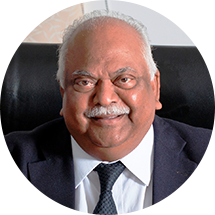Knowledge park
KNOWLEDGE PARK
Please click on the question to view the answers
- What is an Asset Reconstruction Company (ARC) ?
ARC means a Securitisation company(SC) or Reconstruction company(RC) registered under the Companies Act, 1956 and which has obtained a certificate of registration from Reserve Bank of India to commence or carry on the business of securitisation or assets reconstruction under section 3 of the SARFAESI Act, 2002 . A SC or RC apart from undertaking securitisation and reconstruction activities may also carryout the following functions provided under section 10 of the Act :
- Act as an agent for any bank or financial institution for the purpose of recovering their dues from the borrower on payment of such fees or charges.
- Act as a manager to manage the secured assets possession of which is taken by any bank or financial institution.
- Act as a manager to manage the secured assets possession of which is taken by any bank or financial institution.
- What is the primary object in formation of ARCs in india?
The financial sector has been one of the key drivers in India’s efforts to achieve success in rapidly developing its economy. While the banking industry in India is progressively complying with the international prudential norms and accounting practices , there were certain areas in which the banking and financial sectors did not have a level playing field as compared to other participants in the financial markets in the world. There were no legal provision for facilitating securitisation of financial assets of banks and financial institutions.
Further, unlike international banks, the banks and financial institutions in India did not have powers to take possession of securities and sell them. Our existing legal framework relating to commercial transactions has not kept pace with the changing commercial practices and financial sector reforms. This had resulted in slow pace of recovery of defaulting loans and mounting levels of nonperforming assets of banks and financial institutions. Narasimhan Committee I and II and Andhyarujina Committees, interalia, have suggested enactment of a new legislation for securitisation and empowering banks and financial institutions to take possession of the securities and to sell them without the intervention of the courts. Acting on these suggestions, the Securitisation and Reconstruction of Financial Assets and Enforcement of Security Interest Oridance,2002 was promulgated on 21st June,2002 and enacted by parliament in the same year to regulate securitisation and reconstruction of financial assets and enforcement of security interest and for matters connected there with or incidental thereto. The provisons of the Act would enable banks and financial institutions to realize long term assets, manage problems of liquidity, asset liability mismatches and improve recovery by exercising powers to take possession of securities, sell them and reduce non-performing assets by adopting measures for recovery or reconstruction.
- What are the functions of an ARC?
- Acquisition of Financial Assets in accordance with the provisions of the SARFAESI Act.
- Change or takeover of Management/Sale or Lease of Business of the Borrower.
- Rescheduling of Debts.
- Enforcement of Security Interest in accordance with the provisions of the SARFAESI Act.
- Settlement of dues payable by the borrower.
- Act as an agent for any Bank/ FI for recovering their dues.
- Act as a receiver if appointed by any court or tribunal.
- Taking possession of secured assets in accordance with the provisions of the SARFAESI Act.
- Act as a manager to manage the collateral assets taken over by the lenders under security enforcement rights available to them.
- How are financial assets transferred from Banks/ Financial Institutions to an ARC ?
Any SC or RC may acquire financial assets of any bank or financial institution
- By issuing debentures/bonds or any other security in the nature of debenture.
- By entering into an agreement with such bank or financial institution for transfer of such financial assets.
The purchase consideration for effecting such a transfer includes :
- Cash – in which cases the selling bank/ FI ceases to hold any interest in the financial asset post sale to ARC.
- Security Receipts , or other bonds/ debentures issued by SC/RC. In which cases, the pricing is linked to Recoveries and the selling bank/FI continues to hold interest in the financial asset through SRs. Such securities will be classified as investments in the books of banks/ financial institutions.
Banks/financial institutions may enter into an agreement with SC/RC to share, in an agreed proportion, any surplus realised by SC/RC on resolution of the concerned asset.
- What is the asset acquisition and asset holding structure of ARCs ?
- SCs/RCs can acquire the assets in their own books.
- The SARFAESI Act, 2002 and the RBI guidelines provide for acquisition of financial assets by Asset Reconstruction Companies (ARCs) through Trusts set up exclusively for the purpose. Accordingly, ARCs will acquire the financial assets and hold the same under the Trust. ARC would be the Trustee and the Managing Agent.
- How will ARC discharge the consideration for transfer of financial assets? What will be the sources of funds for ARC to effect the payment ?
- SCs/RCs will pay cash towards consideration if the asset is to be acquired in its own books.
- ARCs can use its own funds i.e. capital or from the funds which may be raised by ARCs through issue of bonds/debentures.
ARCs will be holding Financial Assets (FAs) in a Fund floated by the Trust for the benefit of the investors (Qualified Institutional Buyers - QIBs). The Trust will float schemes for acquisition of Financial Assets (FAs) and issue Security Receipts (SRs) to the investors who shall subscribe to the same by making the payment for it. Such monies received from investors shall be utilized towards payment of purchase consideration for financial assets to the selling Banks / FIs.
Since the selling Banks/ FIs shall also be the initial subscribers to the SRs as QIBs, the SRs subscribed to by them shall represent the proportion of their share in the aggregate principal outstanding loan amount provided all criteria such as security profile remaining the same.
- What is meant by Securitisation ?
Securitisation is the process of conversion of existing assets or future cash flows into marketable securities. In other words, securitisation deals with the conversion of assets which are not marketable into marketable ones.
Securitisation helps banks to sell off their bad loans (NPAs or non performing assets) to asset reconstruction companies (ARCs). ARCs, act as debt aggregators and are engaged in acquiring bad loans from the banks at a discounted price, thereby helping banks to focus on core activities.
On acquiring bad loans ARCs restructure them and sell them to other investors as SRs, thereby freeing the banking system to focus on normal banking activities.
- What are Security Receipts ?
Security Receipt means a receipt or other security, issued by a securitisation company or reconstruction company to any qualified institutional buyer pursuant to a scheme, evidencing the purchase or acquisition by the holder thereof, of an undivided right title or interest in the financial asset involved in securitisation. SRs shall be redeemed only out of realization from financial assets held under the Trust and carry no fixed returns. SRs may also be sold in the secondary market.
- How will the Security Receipts (SRs) be treated in the books of the subscriber? Do the subscribers need to " mark to market " the SRs? How will an ARC determine the Net Asset Value (NAV) of the SRs and at what intervals will the NAV be declared ?
- The Security Receipts (SRs) would be treated as a Non-SLR security (investments) in the books of the subscriber Banks/ FIs as per the RBI guidelines.
- In the absence of a ready market, the subscribers would need to value SRs on the basis of the Net Asset Value (NAV) to be periodically declared by the ARCs at half-yearly intervals 30th June & 31st December every Year. However review would be on a continuous basis so that any further deterioration in the value of SRs is declared immediately to the SR holders.
- The Trusts shall issue SRs only to QIBs and shall hold and administer the financial assets for such QIBs.
- An ARC proposing to issue SRs shall, prior to such issue, formulate a policy duly approved by the board of Directors.
- The SRs issued by ARCs are predominantly backed by impaired assets and cannot be characterized either as a debt or an equity instrument, since they combine the features of both.
- The NAV of an SR would be arrived at after due rating which would normally be below investment grade and the SRs are generally privately placed and not listed.
- In the event of non realisation of the financial assets, the SR holders, representing 75% of the total value of the SRs, issued by the ARC, can call for a meeting of all SR holders in a particular scheme and every resolution passed in such meetings will be binding on the ARC.
- Rating of SRs should be obtained from SEBI registered rating agencies to whom all required information shall be supplied.
- The rating/grading should be based on recovery risk as against default risk which is the basis of rating assignments in normal assets.
- The other key issues that should be factored in, while assigning Recovery rating are: extent of debt acquired, composition of lenders, collaterals available, security and seniority of debt, individual lender vis-à-vis institutional lender, estimated cash flows from the underlying impaired assets till the maturity of the SRs, uncertainty in realizing the expected cash flows in initial period, management, business risk, financial risk etc.
- The rating will be assigned on a new specifically developed rating scale called recovery rating scale. Each rating category in the recovery scale will have an associate range of recovery expressed in percentage terms, which can be used for arriving at NAV of SRs.
- The cash flows from the underlying assets cannot be predicted in terms of value and intervals.
- What is a Financial Asset ?
The expression 'Financial Asset' has been defined in wide terms to include debt or receivables or part thereof whether secured or unsecured any right or interest in any security (mortgage, pledge or hypothecation or any other charge) or any beneficial interest as property or such debt or receivable whether existing, future, accruing, conditional or contingent.
- Is there any restriction on the investment by FIIs in SRs ?
As per Foreign Exchange Management (Transfer or Issue of Security by a Person Resident outside India) Regulations, 2000 the total holding by a single FII in each tranche of scheme of SRs should not exceed 10% of the issue and the total holdings of all FIIs put together should not exceed 49% of the paid up value of each tranche of scheme of SRs issued by the ARC.
- Who will bear the loss arising from the difference between acquisition price and realized price ?
ARC will function like a Mutual Fund. It will transfer the acquired assets to one or more trusts [set up u/s 7(1) and 7(2) of SARFAESI Act, 2002] at the price at which the financial assets were acquired from the originator (Banks/FIs).
The trusts shall issue Security Receipts to Qualified Institutional Buyers [as defined u/s 2(u) of SARFAESI Act, 2002].
The trusteeship of such trusts shall vest with the ARC.
ARC will get only management fee from the trusts. Any upside in between acquired price and realized price will be shared with the beneficiaries of the trusts (Banks/FIs) and ARC. Any downside in between acquired price and realized price will be borne by the beneficiaries of the trusts (Banks/FIs).
- What is the process followed by PARAS to acquire the assets from a Bank / FI?
ARCs can acquire assets either through participation in auction of NPAs conducted by the banks/financial institutions or through bilateral negotiations.
In case of auctions, the following process is commonly adopted- Banks/FIs notify sale of NPAs.
- Submission of expression of interest for acquisition of NPAs.
- Due Diligence of the financial asset to be acquired .
- Submission of bids.
- Negotiation with the selling bank/FI and finalisation of purchase consideration.
- Declaration of Trust – A trust is constituted for acquiring the financial asset wherein the ARC acts as a sole trustee. The Trust raises funds from qualified investors through issue of Security Receipts for financing the acquisition. SRs are issued pursuant to an Offer Document specifying the details of the acquisition. The SC/RC is required to invest an amount of at least 5% of the purchase consideration. The Trustee is the legal owner of the financial asset acquired under the trust while subscribers to the SRs become the beneficial owners of the financial asset. ARC acts as a trustee and the manager of the trust and uses its powers available under the SARFAESI Act to recover the dues from the Borrower.
- Payment of Purchase consideration and Execution and registration of Assignment Agreement between selling bank/FI (Assignor) & ARC (Assignee).
- Collection of all the relevant files & documents of the borrowers whose assets are acquired by ARC from selling bank/FI.
- Substitution of ARC in all recovery proceedings.
- Do the Banks/FIs need to have a policy in relation to transfer of assets to ARC? What are the key components of such a policy ?
The RBI guidelines to Banks/ FIs on sale of assets to ARC state that Banks/ FIs, which propose to sell their financial assets to Asset Reconstruction Company (ARC) should ensure that the sale is conducted in a prudent manner in accordance with a policy approved by the Board. The Board shall lay down policies and guidelines covering, inter- alia :
- Financial assets to be sold.
- Norms and procedure for sale of such financial assets.
- Valuation procedure to be followed to ensure that the realisable value of financial assets is reasonably estimated and .
- Delegation of powers of various functionaries for taking decision on the sale of the financial assets, etc.
- Banks may also invest in Security Receipts, pass through certificates (PTC), or other bonds/debentures issued by SC/RC.
- Banks/FIs should ensure that subsequent to sale of the financial assets to SC/RC, they do not assume any operational, legal or any other type of risks relating to financial assets sold.
- Banks/FIs may receive cash or bonds or debentures as sale consideration for the financial assets sold to SC/RC.
- If ARC acquires 75% of the secured debt, what are the options available to the lenders who have not transferred their share of the debt to ARC ?
As provided in Section 4 d (ii) of the RBI guidelines to Banks/FIs on sale of financial assets to SC/RC, in the case of consortium / multiple banking arrangements, if 75% (by value) of the Banks / FIs decide to accept the offer of the Asset Reconstruction Company (ARC), the remaining Banks / FIs will be obligated to accept the offer by the ARC..
- Can the borrower have any say in the transfer of assets to ARC? What are the remedies available to the borrower to oppose such a transfer ?
Under the SARAEFSI Act, 2002 an Asset Reconstruction Company (ARC) may acquire an interest in financial assets of any Bank / FI. The Bank / FI may, if it considers appropriate, give a notice of acquisition of financial assets by ARC to the concerned obligor. The borrower cannot oppose this move of the Banks / FIs.
- In case additional funding is required to reconstruct an asset, will the existing lenders need to contribute ?
SC/RCs can deploy their funds for undertaking restructuring of acquired loan account with the sole purpose of realizing their dues
- How does the asset resolution strategy of an ARC differ from that under the Corporate Debt Restructuring (CDR) mechanism ?
The essential objective of both the Corporate Debt Restructuring (CDR) and ARC is the same-Unlocking value from non-performing / distress assets. Hence, they can be seen as complementary resolution efforts in addressing the distressed asset problem.
The ARC route has the advantage of taking the asset off the Banks' books and creating a secondary market for it, thereby enhancing the value potential.
ARC is focused towards resolution rather than the reschedulement of debt. Debt aggregation by ARC will enable single point responsibility and ensure speedy implementation of resolution strategy based on sustainable level of debt within a reasonable timeframe.
- What assets are covered under SARFAESI action ?
Any asset movable or immovable, given as a security whether by way of creating a mortgage, hypothecation or creating a security interest in any other form are covered under the SARFAESI action. However, provisions of the act are not applicable in certain cases as specified under section 31 of the Act.
- How will the transfer of Financial Assets (FAs) from the Bank / FI to ARC be effected? Why is assignment of debt required ?
The transfer of Financial Assets (FAs) will be effected by way of an agreement between the Bank / FI and ARC. The transfer as contemplated under the SARFAESI Act, 2002 amounts to assignment of debt in law.
- What is the stamp duty payable on transfer of assets to ARC? Are any stamp duty concessions available for such transfer ?
As the process involves transfer/assignment of mortgage debts and the same will attract stamp duty as "Conveyance" on ad- valorem under the corresponding stamp laws of the states where the mortgaged asset is located. The duty in various states is very high ranging from 4% to 10%. In few states concessions are available as the same is kept under a special article as "assignment of debt with or without underlying securities" and is capped at maximum of Rs.1.00 lakh in the states of Andhra Pradesh, Bihar, Chhattisgarh, Delhi, Gujarat, Karnataka ,Maharashtra ,Tamil Nadu, Uttar Pradesh and West Bengal.
- Do the lenders need to take any action against the borrower under the SARFAESI Act, 2002 or otherwise prior to transfer to ARC ?
No. Any NPA may be transferred to ARC irrespective of the action taken by the Bank / FI under the SARFAESI Act, 2002 or otherwise.
- Do the loan documents for assets being proposed to be transferred to ARC need to carry any covenants to enable such transfer? Should all future documents entered between lenders and borrowers contain any specific covenants to enable ease of transfer of assets to an ARC ?
Any acquisition under the SARFAESI Act, 2002 does not require any covenants in the loan documents to enable the transfer.
- What will be the status of BIFR proceedings on acquisition of 75% of secured debt by ARC ?
The SARFAESI Act, 2002 stipulates that once the assets are acquired by any Securitisation/Asset Reconstruction Company, no further reference can be made by the Borrower Company to BIFR. Pending reference before BIFR shall abate only when any measure is taken by ARC under Section - 13(4) of the SARFAESI Act, 2002.
- What are the rights of Secured Creditors under Insolvency Laws ?
Although insolvency laws recognize the rights of secured creditors to remain outside insolvency or winding up proceedings and realize the securities till the enactment of the SARFAESI Act, such reights could be exercised only with the intervention of the courts. With the powers now conferred on secured creditors , the rights of secured creditors can be exercised without intervention of courts. Definition of “Secured Creditor” under SARFAESI Act is restricted to the Banks and Financial Institutions.
CIN No . :
U67120TG2007PLC053327
Privacy Policy | Website T&C
2021 | Powered by Pridhvi Asset Reconstruction and Securitisation Company Limited









